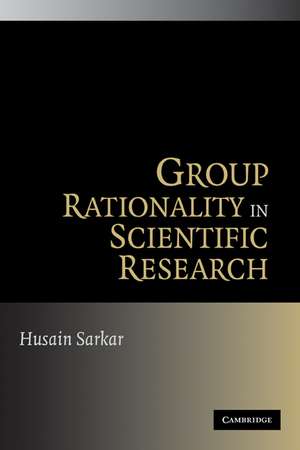Group Rationality in Scientific Research
Autor Husain Sarkaren Limba Engleză Paperback – 29 iun 2011
| Toate formatele și edițiile | Preț | Express |
|---|---|---|
| Paperback (1) | 287.48 lei 6-8 săpt. | |
| Cambridge University Press – 29 iun 2011 | 287.48 lei 6-8 săpt. | |
| Hardback (1) | 421.48 lei 6-8 săpt. | |
| Cambridge University Press – 15 apr 2007 | 421.48 lei 6-8 săpt. |
Preț: 287.48 lei
Nou
Puncte Express: 431
Preț estimativ în valută:
55.01€ • 57.11$ • 45.87£
55.01€ • 57.11$ • 45.87£
Carte tipărită la comandă
Livrare economică 22 martie-05 aprilie
Preluare comenzi: 021 569.72.76
Specificații
ISBN-13: 9780521317986
ISBN-10: 0521317983
Pagini: 302
Dimensiuni: 152 x 229 x 17 mm
Greutate: 0.45 kg
Editura: Cambridge University Press
Colecția Cambridge University Press
Locul publicării:New York, United States
ISBN-10: 0521317983
Pagini: 302
Dimensiuni: 152 x 229 x 17 mm
Greutate: 0.45 kg
Editura: Cambridge University Press
Colecția Cambridge University Press
Locul publicării:New York, United States
Cuprins
1. The overview; 2. Group rationality: a unique problem; 3. The problem explored: Sen's way; 4. The skeptical view; 5. The subjectivist view - I; 6. The subjectivist view - II; 7. The objectivist view; 8. Putnam, individual rationality, and Peirce's puzzle; 9. The nine problems.
Descriere
This 2007 book proposes answers to questions central to the philosophy of science by building on classical solutions.










